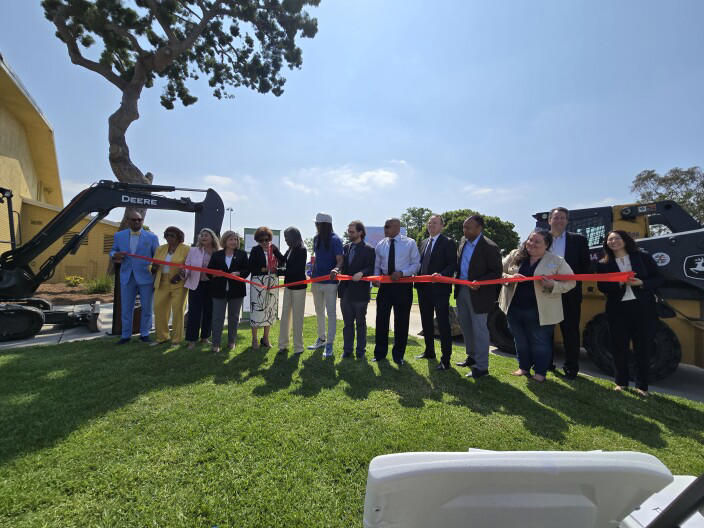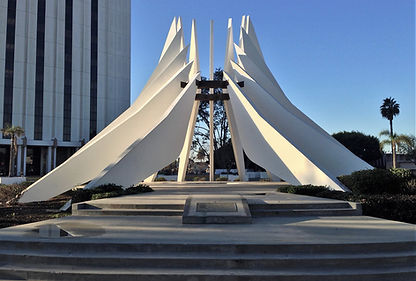Opinion: 🌐The Southeast L.A. Fiber Project—Infrastructure Need or Political Optics?
- Citizens Coalition Admin

- 3 hours ago
- 4 min read
In a heavily publicized groundbreaking ceremony, local officials in Compton marked the start another feel-good project, the $104 million fiber optic network designed to run 125 miles through 24 city halls in Southeast Los Angeles. Heralded as a solution to a long-standing “digital divide,” the project is being funded by a mix of California state technology grants and CPUC-administered federal passthrough funds (California Public Utilities Commission).

Was High-Speed Internet Really "Missing" in the Heart of L.A. County?
Let’s be honest. We aren't in rural Oklahoma. The region includes cities like Downey, Bellflower, Huntington Park, and Compton—each densely populated and heavily commercialized, sitting within a massive telecom grid. All residents, from grade-schoolers to senior citizens, already carry smartphones with 5G access, and basic broadband has existed here for decades. In fact, for years, residents have paid the same prices for internet service as customers in wealthier areas—but received far slower speeds and outdated DSL or cable infrastructure in return.
The reality isn’t a lack of connectivity. It’s that ISPs like AT&T and Frontier neglected to invest in modern infrastructure in these areas because they didn’t see the return on investment. That’s not a community problem—that’s a private sector abandonment problem, allowed to continue for years under light-touch regulation.
Why Now? And Who’s Actually Paying?
The timing of this project comes just as California is facing a $50+ billion budget shortfall, fueled by corporate flight, shrinking high-income tax revenue, and soaring public obligations—particularly those tied to immigration and social services. Yet somehow, the state found over $100 million for a broadband project in urban L.A., where basic connectivity is already widespread.
This money isn’t coming from thin air. It’s being pulled from:
The California Middle-Mile Broadband Initiative, funded by state bonds and surpluses now under strain,
The CPUC's Last Mile Federal Funding Account, using pandemic-era federal dollars,
And utility surcharges paid by all Californians through their phone bills—yes, even those in rural counties who won’t benefit from this project at all.
So while it’s “free” to local governments, it’s being paid for by state residents and businesses—many of whom are already leaving the state over regulatory burden and taxation.
Who’s Building It and Why It Matters
The project is being coordinated by the Gateway Cities Council of Governments, a coalition of city governments representing Southeast L.A. The construction will connect 24 city halls directly into California’s $5 billion Middle Mile Broadband Network. From there, each city is expected to choose its own ISP through competitive bidding to “light up” the fiber and extend internet to homes and businesses.
Enough reputable ISPs step up to operate in these areas,
The final mile rollout is affordable and successful,
Maintenance costs don’t become a "local budget sink" after the fanfare fades.
This approach mirrors a successful model already running in the South Bay—but that area had more stable finances, less political friction, and a history of sound civic management. Can the same model survive in fiscally distressed cities like Compton? That remains to be seen.
The Real Problem Wasn’t Access—It Was Apathy
The project’s defenders point to kids doing homework in parking lots of fast-food restaurants during COVID as proof of a connectivity crisis. But that’s not unique to Southeast L.A., and it ignores the obvious: everyone has mobile internet now. In 2025, nearly every household has at least one smartphone with a data plan. Students, workers, and retirees alike stream, email, Zoom, and text with ease. The problem isn’t physical access—it’s that ISPs delivered bottom-barrel service in working-class areas for full retail price.
The real outrage should be this: Why were these communities paying the same as Beverly Hills customers for inferior service for years—and why weren’t providers forced to upgrade before the state stepped in to fix it for them?
Is This a Smart Investment or a Political Move?
If this network delivers on its promises—better speeds, lower prices, and actual ISP competition—it could be a game-changer.
But the risk is real: it could also become a half-finished backbone with no last-mile partner, sitting idle like so many state-run tech projects before it.
In the context of a state budget crisis, energy cost spikes, and an exodus of employers like Plenty, which shuttered its Compton indoor farm in late 2024 due to overhead costs, this project raises hard questions. Are California’s leaders building long-term infrastructure—or just chasing headlines while critical services crumble?
What We’re Not Being Told
This isn’t about “bridging the digital divide.” That narrative is outdated. The real issue is that residents in Southeast L.A. have been paying premium prices for substandard speeds for years, while the same ISPs poured money into Beverly Hills, Santa Monica, and Silicon Valley.
The state’s response? "Build" the infrastructure those companies refused to—and then invite those very same companies to bid on the service once state funded infrastructure is done.
And let’s be clear: if the same players win the contracts, this project just becomes a another taxpayer-funded bailout for corporate neglect.
We don’t need more ribbon cuttings. We need performance clauses, price caps, and clawbacks. Because infrastructure without accountability isn’t progress—it’s PR.
Whether this $104 million investment becomes a true leap forward—or just another taxpayer-funded dead end (like the high speed train project)—will depend not on fiber optics, but on fiscal discipline, competent execution, and public accountability.







Comments